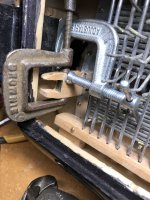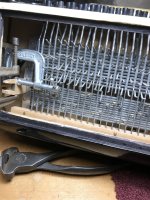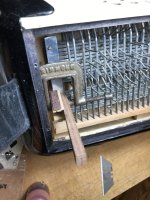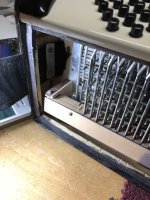32251
Active member
Interesting repair to do on this accordion. No damage to the outer bass cover plate so how did this interior left side frame of the bass assembly get split? Good that all the wood pieces are sill inside. Will have to pull the last 4 button rods and start lining it all back up and glue it back. Never ending the damage you run into with accordions.





